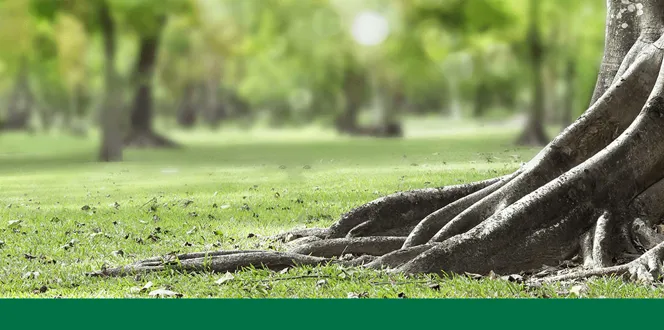Looking for a tree that brings a graceful appearance, bright foliage, and unique beauty to your home landscape? Look no further than the Japanese maple.
This versatile tree can liven up small spaces and accent special areas of your yard, giving you that year-round color and texture that makes your entire landscape shine.
But, as any Japanese maple owner will tell you, they’d prefer to have a healthy, thriving tree versus one that is suffering from a disease.
Verticillium wilt on Japanese maples is not something you want to see. It can not only impact its gorgeous leaves and overall look, but it can also cause some severe damage and lead to tree death.
Let’s talk more about what does verticillium wilt look like on Japanese maples and how to treat verticillium wilt on Japanese maples so you can help your trees if this disease strikes.
What Is Verticillium Wilt?
Verticillium wilt is a fungal disease that invades trees through their root systems via a soil-borne pathogen known as Verticillium dahliae. It can also infect trees above ground through open wounds in bark or branches.
Younger Japanese maples are particularly susceptible to verticillium wilt.
What Does Verticillium Wilt Look Like On Japanese Maples?
What are the first signs of verticillium wilt?
In spring, you might first notice that your buds are failing, your leaves are smaller than usual, or maybe you see a sudden abnormal wilting, which results from the fungus’s ability to block the flow of water to the tree’s foliage. But these other verticillium wilt Japanese maple symptoms can also emerge:
- Impacted leaves will be yellow or have brown spots prematurely.
- Multiple branches may have symptoms, looking scorched or revealing dead or dying twigs.
- Branch death will start from the tip.
- Symptoms can mimic other diseases and other tree problems, such as poor soil, drought, or overwatering.
Japanese Maple Verticillium Wilt Treatment
Let’s start with the hard news: Unfortunately, there is no instant cure to verticillium wilt.
After reading that, you may be asking, “Can maples survive verticillium wilt?” With proper knowledge and care, nurturing your tree back to health is possible.
The process starts with proper disease identification. An ISA Certified Arborist ® can test the tree for the pathogen’s presence. There is no fungicide treatment for verticillium wilt.
Your arborist will prune out infected branches, properly disposing of infected branches, and sterilizing tools between pruning different trees.
Then, reducing plant stress is the best way to fight verticillium wilt, which includes proper mulching, pruning, and fertilization, as well as adequate water. Some trees can struggle along fighting this disease for years, while others die quickly after symptoms show up; this pathogen is very unpredictable.
How Do You Stop Verticillium Wilt From Spreading?
Sterilizing pruning tools is a great way to help prevent verticillium wilt on Japanese maples from spreading to more branches or other trees.
One way to prevent its spread is to plant resistant tree and shrub species, such as:
- Aspen
- Azalea
- Beech
- Birch
- Butternut
- Crabapple
- Dogwood
- Flowering Quince
- Ginkgo
- Hackberry
- Hawthorn
- Hickory
- Holly
- Honeylocust
- Mountain Ash
- Pear
- Poplar
- Sweetgum
- Sycamore
- Walnut
- White Oak
- Willow
Does Verticillium Wilt Stay In The Soil?
How long does verticillium wilt last? Unfortunately, the pathogen persists for indefinite periods of time in the soil. Since it survives as mycelium – a microscopic, thread-like body – or as resistant structures called microsclerotia, it’s hard to detect. In fact, microsclerotia can survive in dead plant material and soil for up to a decade.
Since the disease can live in wood chips made from infected trees for at least one year, arborists suggest never using mulch that may include infected pieces or have questionable origins.
Verticillium Wilt Prevention Methods
The reason verticillium wilt impacts Japanese maples more than other trees is because of their shallow root systems.
To prevent this disease from impacting your Japanese maples, keep an eye on plant health. Early diagnosis is a big key to controlling the disease by pruning and properly disposing of infected branches.
Also, mulch properly and avoid overwatering your trees to reduce stress. Ensuring good soil drainage can limit excess irrigation.





